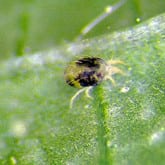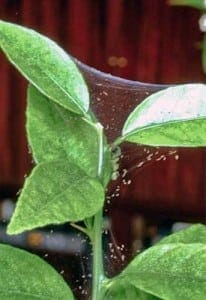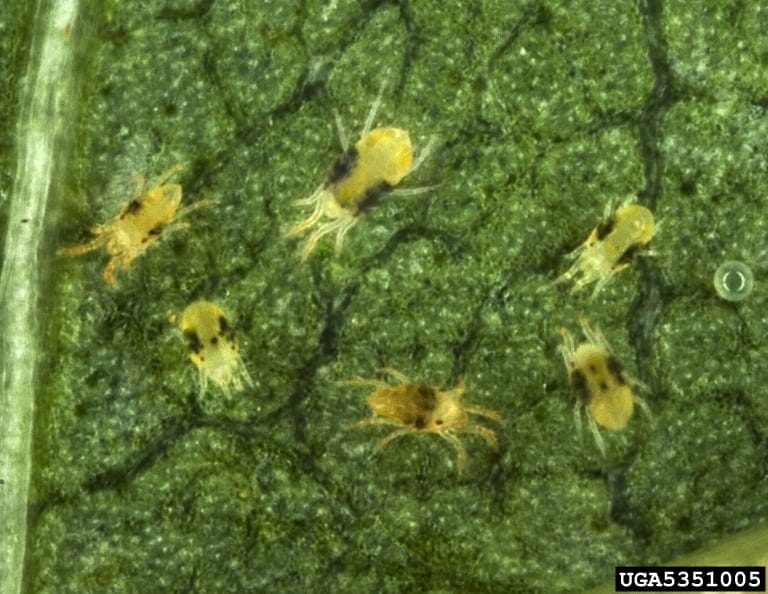How-To, Newsletter Articles
How to Get Rid of Spider Mites Organically
 Spider mites can cause massive damage to many indoor and outdoor plants, learning how to get rid of spider mites organically is very important to keeping your plants healthy and happy. Learn more about spider mites, the damage they cause and how to get rid of them organically.
Spider mites can cause massive damage to many indoor and outdoor plants, learning how to get rid of spider mites organically is very important to keeping your plants healthy and happy. Learn more about spider mites, the damage they cause and how to get rid of them organically.
Learn About Spider Mites
Spider mites are in the Tetranychidae family. Spider mites are classified as an arachnid, relative to spiders, scorpions or ticks. They are only about .02 inches long and are oval in shape.
Mites flourish on the underside of leaves and organize colonies that feed on the leaf tissue and its nutrients. Initially, the damage caused to plants shows up as light dots on the underside of leaves, but if left untreated, the leaves will turn yellow, dry up, die and fall off. Eventually the entire plant could die due to untreated spider mites.

They are very common in the United States and are known to damage indoor and outdoor plants. Most commonly found in hot and dry conditions, spider mite rates have been increasing due to an increase use of insecticides which kill spider mites natural predators. Without these predators, mites are able to reproduce quickly and heavy infestations will follow quickly. A heavy infestation of spider mites will cause fine webbing between leaves.
Many mites will plant their eggs on the leaves and bark of host plants. They’ll hatch once temperatures warm and larvae will feed on their host plants before seeking out additional shelter.
After finding shelter, the larvae will molt three times before becoming matured adult mites. The process from egg to adult takes about 5 days. Once the spider mites reach their full maturity, they will begin looking to mate and after mating, females will produce up to 300 spider mite eggs over about 14 days.
Spider Mites Damage
Spider mites can travel wide distances by riding their webbing through the wind. This combined with their quick reproduction times are how spider mites can infest an entire garden very quickly. Getting rid of spider mites as quickly as possible is very important to saving many of your plants, and doing this organically is often thought of as a challenge.
In addition to the killing of leaves of many plants, spider mites can also cause impact to other crops as well: sunburned melons, pumpkins and squash, and direct damage to peas and beans, ornamental plants and roses.
How to Get Rid of Spider Mites Organically
- Pruning: First, be sure to prune any infested plants, and webs and take them to your nearest dumpster.
- Water: spider mites breath through the sides of their bodies so a good watering can suffocate many of them. Water underneath the leaves where the spider mites have colonized once or twice a week.
- Beneficial insects can work wonders on fighting off spider mites, we offer many spider mite control bugs such as predatory mites, stethorus punctillum (which feast on the eggs), P. persimillis and more! Come by Green Thumb Nursery for more information regarding our beneficial insect options.
- Next try insecticidal soap, neem oil, horticultural oil or botanical insecticides to spot treat heavily infested areas. We have many options in-store for you to choose from so come by and ask your garden professional about the different brands and options that we carry.
- Consistently knock down webs, water the plants properly, and follow the above steps until the spider mites have all gone from your garden.
Making sure to have a corrective solution for every stage of the life cycle (egg, nymph, and mature adult) is essential to getting rid of spider mites permanently.
Photo Credit: University of Maryland Extension


I use a combination of natural Pyrethrin, 1.4%, and a good Horticultural Oil. I hit them first with the Pyrethrin to knock the population down and then I follow up with 3 spraying off the Horticultural Oil, 7 to 10 days apart, to keep the population down. I then spray as needed. Make sure that the Horticultural Oil being use does not have any heat restrictions on it. This combination use this way works great on almost all motes.
Great suggestion, I might give this combination a try the next time I spot a couple of these critters.
We like ur weblog so much. we think i will visit your weblog again soon.